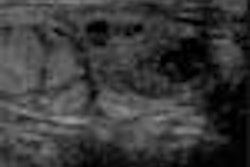(Ultrasound Review) Assessment of the diastolic notch in Doppler ultrasound screening of uterine arteries has an established role in predicting hypertensive disorders of pregnancy and intrauterine growth restriction. Researchers at the University Hospital, Groningen, studied 625 pregnant women over a two-year period to determine whether quantification of the diastolic notch improved prediction accuracy.
According to the results of this prospective study published in Ultrasound in Obstetrics and Gynecology, both the pulsatility index (PI) and the notch index (NI) were poor predictors for mild gestational hypertension and pre-eclampsia. In cases of severe early-onset gestational hypertension and pre-eclampsia, however, predicted values were improved.
Subtracting the lowest notch velocity from the highest notch velocity and dividing that by the mean flow for the cardiac cycle determined the NI. Using a cut-off of 0.03 for NI, the sensitivity for severe cases was 56.5% and the specificity was 77.5%. Using a cut-off of 1.3 for PI, the sensitivity was 78% and the specificity was 76%.
Their results demonstrated that the NI proposed by the authors for diastolic notch quantification "had no additional value compared with the PI in prediction of either mild or severe disease," the researchers said. There was a positive correlation between the NI and PI when a diastolic notch was present, with both indexes indicating the amount of impedance to blood flow beyond the uterine artery. Nevertheless, it has been shown by a number of researchers that a diastolic notch is not consistently present in pregnancies with abnormal velocities and very high PI values.
The University Hospital researchers therefore concluded that "quantification of the diastolic notch did not improve predictive power of uterine artery screening" and "uterine artery screening shows disappointing predictive values for mild gestational hypertension and pre-eclampsia."
The results supported the contemporary theory that insufficient dilation of the spiral arteries, and hence high PI values, was a causal factor in severe pre-eclampsia. In mild cases, however, this was not what was responsible for changes, and there were many possible causes that needed consideration.
"Quantification of the diastolic notch in Doppler ultrasound screening of uterine arteries"
M W Aardema et al
Dept of Obstetrics and Gynaecology, Division of Obstetrics and Perinatal Medicine, University Hospital, Groningen, The Netherlands
Ultrasound Obstet Gynecol 2000 (December) 16:630–634
By Ultrasound Review
May 18, 2001
Click here to post your comments about this story. Please include the headline of the article in your message.
Copyright © 2001 AuntMinnie.com



















